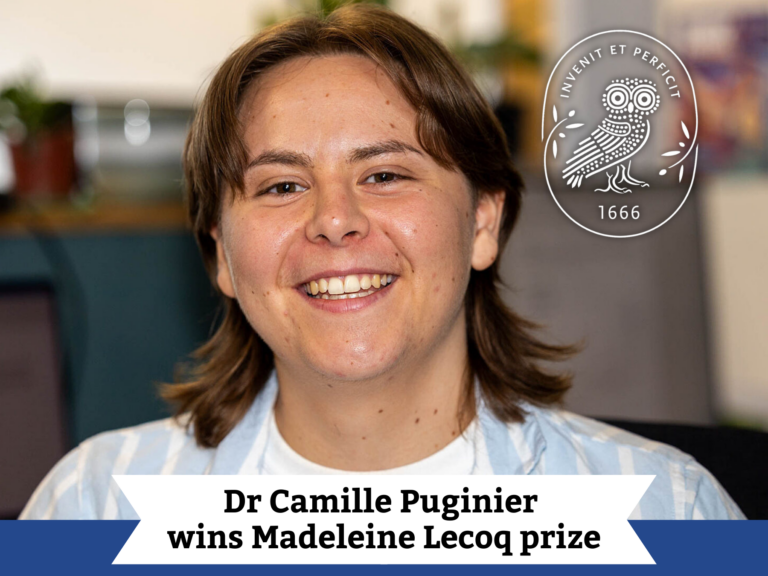The role of genetic technologies in sustainable agriculture
The climate emergency is the most important threat facing our planet. At The Sainsbury Laboratory, our plant health science always factors in the interwoven threats of climate change and global food security.
What is the scale of the threat we are facing?
The human population will reach nearly 10 billion by 2050 which means we must increase food production by about 50%. But this additional production needs to be achieved in a way that does not damage the planet. While modern agriculture can increase food production, there are often associated environmental impacts.
The status quo in agriculture
Agriculture and forestry contribute ~ 23% of global greenhouse gas emissions, including 50% of the methane produced globally and 80% of the nitrous oxide. Nitrogen fertilizer production, so vital to crop productivity, consumes about 5% of global natural gas supplies. We recently saw how gas price hikes stalled fertilizer factories, with the knock-on effect of a shortage in its by-product, food-grade carbon dioxide.
The many chemical inputs into agriculture are all ultimately dependent on fossil fuels. These agrochemicals have been integral in securing the food supply we have today, and finding similarly effective alternatives is not easy. Therefore, agriculture today remains on a chemical treadmill.
How will we grow high quality and nutritious food in a sustainable way?
One answer would be to turn to organic farming, which aims to emphasise soil quality, natural predators, and an understanding of the wider ecology of plant growth. But there are very significant challenges with this means of production too, such as providing a supply of organic fertilisers with enough nitrogen to generate yields similar to conventional agriculture.
Organic production can also fail dramatically when faced with unexpected pest and disease outbreaks, which are frequent and can be expected to increase as our climate changes. Yields per acre in organic production are 20-50% lower than in conventional agriculture, so more land would be required to grow the same amount of food if all agriculture were organic. Conventional agriculture does an extremely good job of growing food productively and efficiently. Chemical inputs to farming are popular because they are very effective, and pesticides are very often the best means of controlling pests and diseases. But faced with the climate emergency, we must look for alternatives. The status quo in farming cannot prevail in the face of such a threat to humanity.
Our challenge is to create ecologically sensitive and sustainable agricultural production systems and to minimise chemical inputs while maintaining or increasing yields. We will need to draw upon best practice from both conventional and organic farming, such as the industrial scale production of conventional farming and the ecological sensitivity of organic production–but critically we need new scientific innovation.
Innovations in plant breeding
Many of the largest gains in agricultural productivity over the last century have come from improved crop varieties produced by plant breeding. Plant breeders select new variants with desirable traits, such as bigger fruits and larger grains. These new variants are a result of mutations in genes. Selecting genetic variants is at the heart of all plant breeding and has been since the dawn of agriculture. All the crop varieties that we rely on have been generated in this way.
However, because of our limited control over the process, characteristics that are desirable can be inherited along with those that are not. This is why plant breeding takes such a long time and requires a great deal of skill. It is worth stressing that organic production, just as much as conventional agriculture, depends on a vibrant plant breeding sector to provide new varieties suited to different conditions. Selecting crops that require less fertiliser, or which are naturally immune to pests, is vital for an organic farmer and they will look to plant breeders to provide those options.
Our knowledge of plant biology has advanced very rapidly in recent years, and we now have technologies that can revolutionise plant breeding by making it much more precise, and much faster. These are the modern genetic technologies that have been developed in the last decade. We also have significantly more knowledge of the genes that plants need to grow effectively and to combat disease. By applying these innovations to develop more resilient plants, we could dramatically increase our chances of replacing chemical inputs and reducing fertiliser use.
Genome editing in the UK
The government has responded to the public consultation on genetic technologies delivered earlier this year and intend to free up genome editing (GE) of plants in the research and development stage. This is the technology for which Jennifer Doudna and Emmanuelle Charpentier won the Nobel Prize in 2020 and has had successful applications in medicine.
GE allows precise mutations to be made in plant genes, thereby allowing plant breeders to directly select the variants they need for new crop varieties. For example, you can remove a gene that makes tomatoes susceptible to powdery mildew disease, thereby making a new variety in a single step. This method was published by researchers at The Sainsbury Laboratory. In addition to this discovery, we know that very small specific changes in genes can have a real impact on crop shape, and the ability of plants to grow in different environments, such as low nitrogen conditions.
Simple genome editing does not involve the insertion of foreign DNA. Rather, DNA sequences are changed or removed, mirroring the spontaneous mutations that have provided us with the crop variants we have today. This is not genetic modification (GM) by any current definition.
The government also announced a second step in which they will consider the appropriate regulatory measures needed so that GE crops can be brought to market. This would be a very welcome development, because it will allow plant breeders to access an important tool for developing the new crop varieties we desperately need for sustainable low-input farming systems.
We recognise the need for a robust and transparent regulatory framework. Transparency and regulation are necessary for public confidence in GE, as well as GM which has many benefits too. However, this should be set alongside a discussion on the consumer benefits that could be derived from these technologies: healthier, more nutritious foods, and the environmental benefits.
With these benefits in mind, why are the environmental movements so opposed to genetic technologies?
There seems to be a view that any genetic manipulation to a plant species is inherently wrong and that the conventional breeding methods we have used up until now are more natural, and therefore, more acceptable. However, all existing crop varieties were developed by the identification of genetic mutants of interest. This has been supplemented by mutagenesis approaches over the last five decades to produce the high yielding crops grown today. By exposing seeds to radiation, enzymes or chemicals to induce genetic mutations, varieties were generated in a way that was essentially blind to the ‘off-target’ effects of the methods. And yet, the plant breeding industry was still able to maintain an impeccable safety record while developing crop varieties that have fed the world during rapid population growth.
A collective vision for a sustainable future
We need a productive dialogue with the environmental movements because we want the same outcomes as they do: agriculture that no longer contributes to greenhouse gas emissions and can feed the growing human population sustainably, ensuring global food security.
New genetic technologies can be an important part of that alongside environmentally-sensitive farming practices, championed by the organic movement. If sustainable farming with reduced chemical inputs is to become a reality–and it really must–then there must be an open mind to new technologies and innovation.
We at The Sainsbury Laboratory are happy to take part in that dialogue. We welcome open and transparent discussions. We want to communicate the exciting science we are doing, both its strengths and limitations.
We cannot feed the world with existing farming practices, or by staying in our silos on opposite ends of the table. If we work together to utilise new technologies in harmony with low-input practices, we could change agriculture forever.
For more information, or to request an interview with Prof. Nick Talbot or Prof. Jonathan Jones, please contact Mia Cerfonteyn at mia.cerfonteyn@tsl.ac.uk or +44 7542028857.
About The Sainsbury Laboratory
The Sainsbury Laboratory (tsl.ac.uk) is an independent research institute that focuses on plant health for a sustainable future. It makes fundamental scientific discoveries in molecular plant-microbe interactions and applies these to reduce crop losses caused by plant diseases, particularly in low-income countries. Around one hundred and twenty staff and students work and study at the Laboratory which is located on the Norwich Research Park, United Kingdom. The Laboratory is generously supported by the Gatsby Charitable Foundation and by the University of East Anglia, wins competitive grants from the BBSRC, ERC and other research grant funding bodies and, for some research programmes, is funded by commercial companies. Established in 1987, highlights of The Sainsbury Laboratory include: discovery of RNA interference in plants by Prof. Sir David Baulcombe FRS as recognised by the Lasker Award and the Wolf Prize in Agriculture, discovery of the first immune receptor in plants by Prof. Jonathan Jones FRS, three current Group Leaders are Fellows of the Royal Society, and five researchers who have been on the Highly Cited Researchers list of top 1% scientists in the world since 2018.


